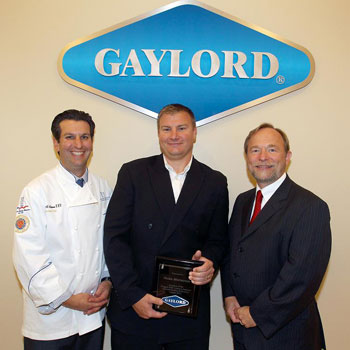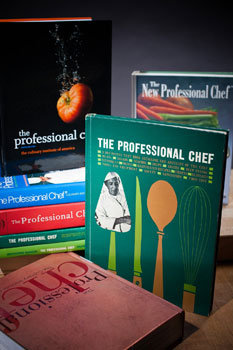New Potato Types Guide Available Free Online from U.S. Potato Board
The word “potato” conjures up different images for different chefs—and with good reason! There are more than 4,000 potato varieties worldwide with more than 100 varieties sold in the United States. So, it’s no wonder that one of the most frequently asked questions we hear from chefs is: Which potato should I use for best results?
To help you answer that question and get the most out of today’s most popular potatoes, the United States Potato Board is pleased to present our newest tool: The Perfect Potato: A Foodservice Guide to Fresh Potato Types.

 Gaylord Industries, commercial kitchen-air-management experts, and Niagara County Community College (NCCC) recently celebrated the opening of the new Niagara Falls Culinary Institute. The state-of-the-art facility, with 25 teaching kitchens and labs, opened in September 2012 with 350 undergraduate students who seek a future in the hospitality and tourism industries.
Gaylord Industries, commercial kitchen-air-management experts, and Niagara County Community College (NCCC) recently celebrated the opening of the new Niagara Falls Culinary Institute. The state-of-the-art facility, with 25 teaching kitchens and labs, opened in September 2012 with 350 undergraduate students who seek a future in the hospitality and tourism industries. An English professor expresses his hope for the culinary-arts students he teaches: that they will see how public speaking translates to everyday interactions.
An English professor expresses his hope for the culinary-arts students he teaches: that they will see how public speaking translates to everyday interactions. From a veritable vegetable harvest to liquid luxuries to 24/7 snacking, a noted trend-tracker is among the first to predict what will be hot on menus next year.
From a veritable vegetable harvest to liquid luxuries to 24/7 snacking, a noted trend-tracker is among the first to predict what will be hot on menus next year. When teaching the development of successful children’s menus, emphasize to your students that all five human sensory perceptions (and an arguable sixth) must be put into play.
When teaching the development of successful children’s menus, emphasize to your students that all five human sensory perceptions (and an arguable sixth) must be put into play. For millennia, specific ingredients indigenous to traditional sheep-growing regions have influenced the types of dishes made using lamb, and today, popular techniques cross global frontiers for many cuts to yield eminently flavorful and satisfying dishes.
For millennia, specific ingredients indigenous to traditional sheep-growing regions have influenced the types of dishes made using lamb, and today, popular techniques cross global frontiers for many cuts to yield eminently flavorful and satisfying dishes. The “healthful” food label gets taken to new levels through nationwide cooperation, resulting in up-and-coming heirloom whole-grain breads and leafy breakfast salads and the well-established veggie-burger revolution.
The “healthful” food label gets taken to new levels through nationwide cooperation, resulting in up-and-coming heirloom whole-grain breads and leafy breakfast salads and the well-established veggie-burger revolution. The Professional Chef continues to change the world of cooking.
The Professional Chef continues to change the world of cooking. Moti Mahal Delux, a legendary high-end restaurant chain that is responsible for the invention of tandoori chicken, operates more than 100 locations throughout India, Nepal and London. This year, chef Gaurav Anand, a native of Punjab, India, has opened the restaurant’s first U.S. location, bringing the flavorful cuisine of the Mughal Empire to Manhattan’s Upper East Side.
Moti Mahal Delux, a legendary high-end restaurant chain that is responsible for the invention of tandoori chicken, operates more than 100 locations throughout India, Nepal and London. This year, chef Gaurav Anand, a native of Punjab, India, has opened the restaurant’s first U.S. location, bringing the flavorful cuisine of the Mughal Empire to Manhattan’s Upper East Side.